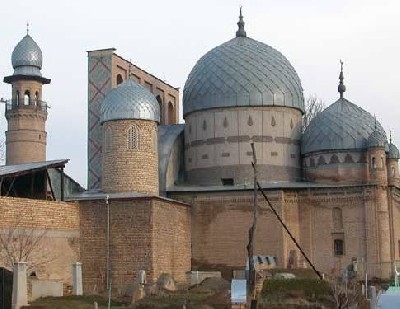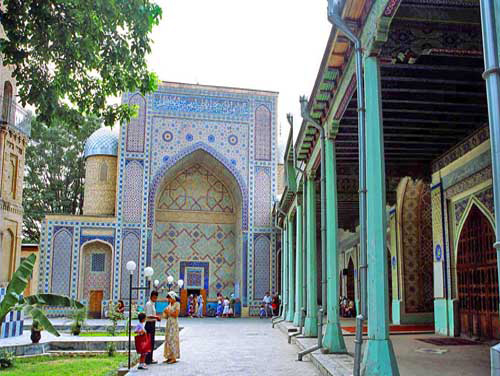15 kilometers from Tashkent in the village of Zangiata is the famous mausoleum of Zangiata, where one of the Muslim saints Sheikh Ai-Khoja, who lived in the XIII century, and his wife Ambar Bibi, was buried. Zangiata, which in translation means "dark father" received this nickname because of the dark color of the skin. He was a follower of the outstanding leader of all the Turkic tribes in Central Asia Sufi Ahmad Yassawi. The mausoleum was rebuilt during the reign of Temur. Legend has it that Temur initially ordered to build a mausoleum to another Muslim saint Ahmad Yassaviy in Turkestan (Kazakhstan). But the erected wall of the mausoleum was constantly scattered, and the construction did not move. And then Yassaviy appeared to Tamerlane in a dream and said that first the honors should be given to Zangiate. Then Tamerlane ordered to rebuild the mausoleum of Zangiata, and then the mausoleum of Ahmad Yassaviy was built in Turkestan. Later in the XVIII century, madrassahs and mosques were completed, the courtyard was finished. At the beginning of the 20th century a minaret was also erected. A vast garden, a complex of monumental buildings of the XIV-XIX centuries, a madrasah (XVIII-XIX centuries), a mosque (1870) with a minaret (1914-1915) and an ancient cemetery were built around the memorial buildings.The Mausoleum is one of the most visited holy places in Tashkent. In Tashkent families, every twelve-year cycle of the Eastern calendar ("muchal yili") is taken, that is, when one of the members of the family turns 12, 24, 36 or more years old, to carry a charitable gift to Zangi-at. Usually such a set includes two meters of white cloth, a white handkerchief, a pack of tea, a kilogram of refined sugar and everything for cooking pilaf: rice, meat, butter, carrots, onions and four tortillas.


